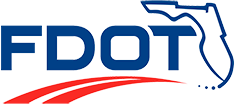
A Traffic Interchange is a system of interconnecting roadways, in conjunction with one or more grade separations, providing for the exchange of traffic between two or more intersecting highways or roadways.
The primary purpose of an interchange is to eliminate conflicts caused by vehicle crossings and to minimize conflicting left-turn movements. Interchanges are provided on all Interstate highways, freeways, other routes on which full access control is required, and at other locations where traffic cannot be controlled safely and efficiently by intersections at grade.
The Florida Department of Transportation (FDOT) and the Federal Highway Administration (FHWA) have a substantial investment in limited access facilities, particularly the interstate system. An IAR’s purpose is to demonstrate that the proposed project is viable based on safety, operations and engineering (SO&E) criteria. Any IAR should start by developing an analysis approach that is followed to determine the impact of the access proposal to the mobility and safety of the limited access facility. The level of acceptance for an IAR varies with the type of request and the complexity of the project and its impact. To streamline the review process, the IAR is required to include a section that describes how the proposed access is consistent with FHWA’s policy points.
FDOT Procedure 525-030-160, New or Modified Interchanges, defines the state and federal requirements and processes to be followed in the development of an Interchange Access Request (IAR). Full compliance with the requirements and process defined in 525-030-160 is required for the consideration of any interchange access proposal.
For more information on preparation and approval of IARs in Florida, refer to the Interchange Access Request User's Guide.
Interchange Justification Report (IJR)
An IJR is required when the proposed action is intended to provide a new access to a limited access facility. Such action requires the highest level of analysis and documentation to justify the need for and operational impacts of the proposed access. The IJR quantifies the magnitude and significance of impacts of the proposed new access on the mainline and mitigation, if needed.
Interchange Modification Report (IMR)
An IMR is required for a proposed action to modify configuration or travel patterns at an existing interchange. The extent and complexity of the proposed modification will determine the level of analysis and documentation required. The level of analysis and documentation requirements are determined and agreed upon in the Methodology Letter of Understanding (MLOU).
Systems Interchange Modification Report (SIMR)
A Systems Interchange Modification Report (SIMR) may be needed when a series of closely spaced interchanges that are operationally interrelated are analyzed for an IAR. Such an effort may be used to support the development of a corridor PD&E study, either following or concurrently with the SIMR development. It is important to understand that the purpose of an SIMR is to evaluate impacts of closely spaced interchanges
Interchange Operational Analysis Report (IOAR)
An IOAR is prepared to document traffic and safety analysis of minor modifications to the existing access points that do not change existing interchange configuration or travel patterns. The determination of an IOAR versus IMR requirement is critical, because the level of effort could significantly vary.
For more information on preparation and approval of IARs in Florida, refer to the Interchange Access Request User's Guide.
2 Quadrant or Partial Cloverleaf
Contain one, two or three loop ramps that may intersect the crossroad in a similar manner to a diamond ramp. The loop ramps are meant to eliminate the major left-turn conflicts. This interchange design can also be effective to provide all necessary movements when one or two quadrants of the interchange must remain undeveloped. (HCM 6th Edition and WSDOT Design Guide, Traffic Interchanges)

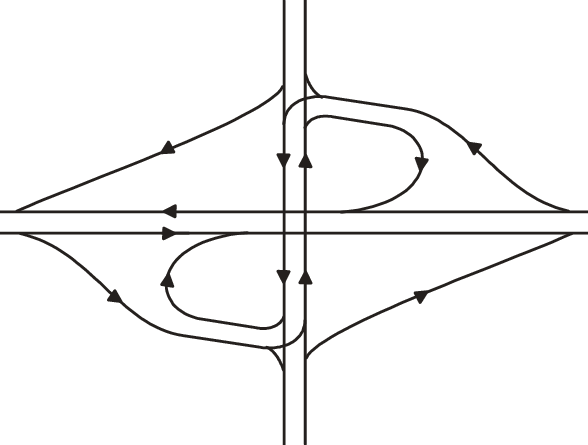
Diamond
Ramps from both freeway directions intersect the cross street at separate, but often closely spaced, intersections. The diamond design is the most generally applicable and serviceable interchange configuration. (HCM 6th Edition and WSDOT Design Guide, Traffic Interchanges)

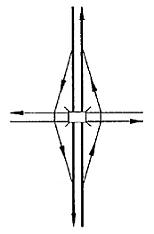
Diverging Diamond
Similar in configuration to a diamond-type interchange, but with a crossover at each intersection rearranging traffic on the cross street, to reduce conflicts for left-turn movements. In other words, a DDI is a type of interchange where the two directions of traffic briefly drive on the opposite side of the road. It is believed a DDI will improve safety since long left turns crossing traffic lanes to enter or exit the Interstate will be eliminated. (HCM 6th Edition and FHWA Diverging Diamond Interchange Informational Guide)
Click here for a map of Diverging Diamond interchanges in the State of Florida
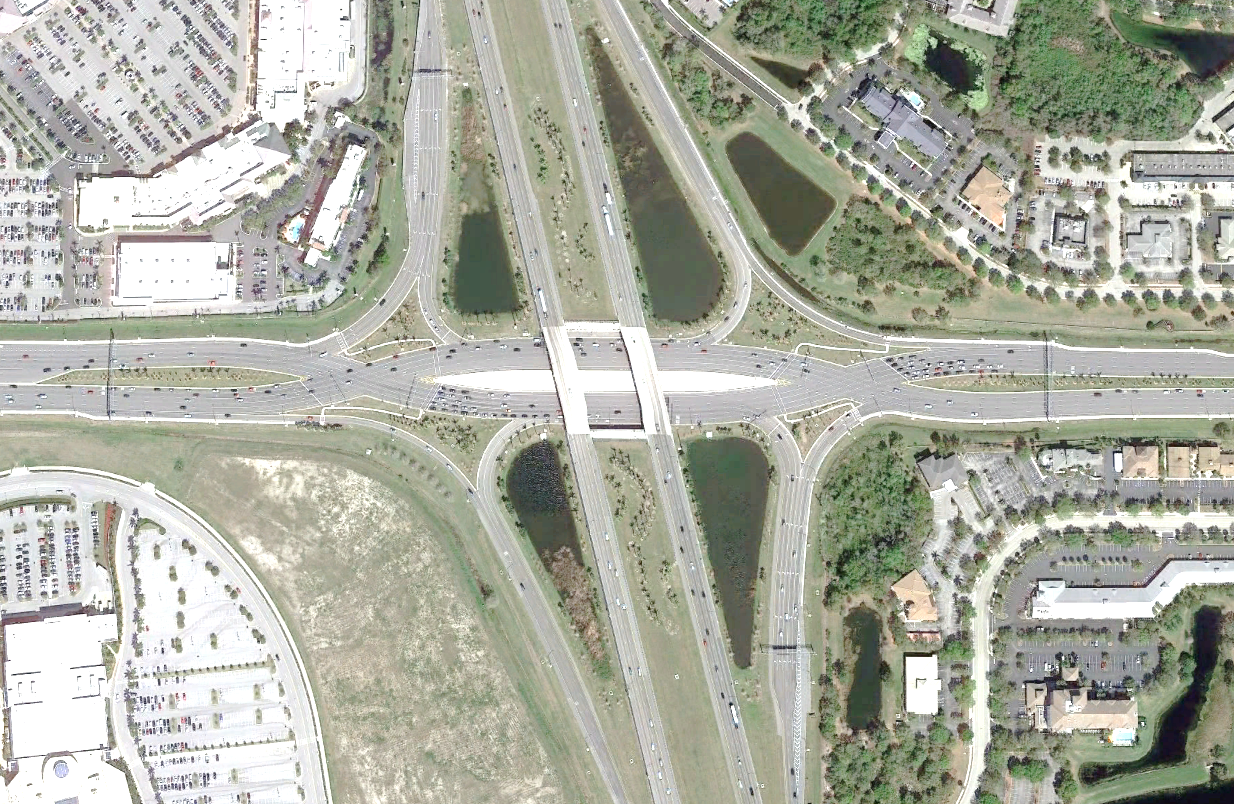
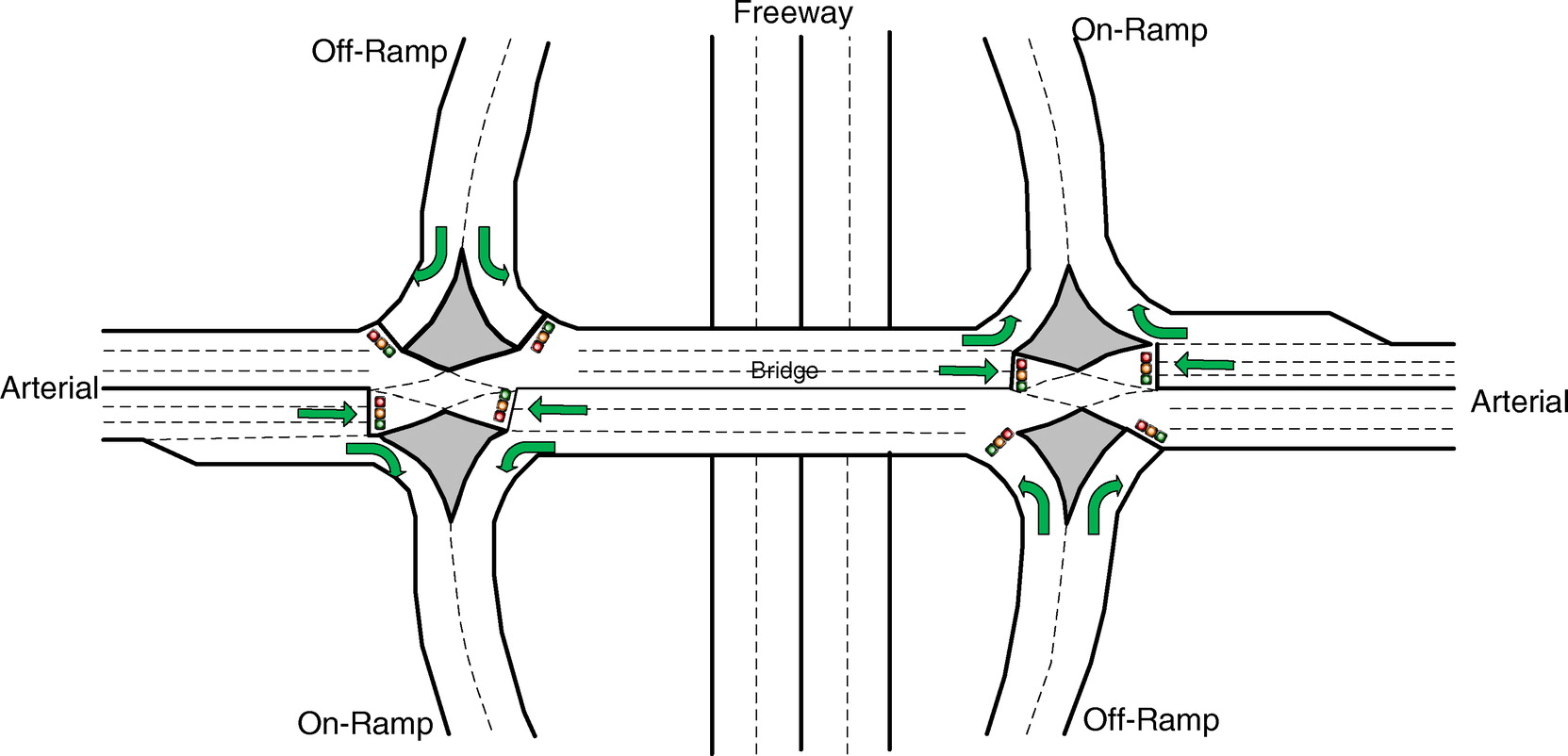
Full Cloverleaf
A full cloverleaf interchange provides four loop ramps, and gives each interchanging movement an indepdent ramp. This eliminates all left turn conflicts at the interchange. A full cloverleaf is a common example of a freeway-to-freeway interchange. (HCM 6th Edition and WSDOT Design Guide, Traffic Interchanges)

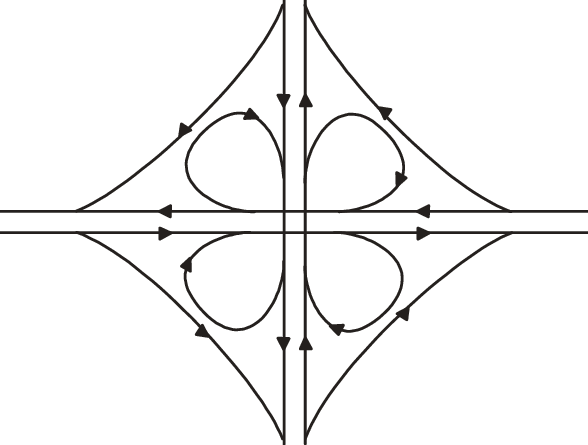
Trumpet
Has a trumpet, or jug-handle ramp configuration. Typically, this interchange type is seen where one highway is terminating and merging to another highway. (AASHTO Green Book)
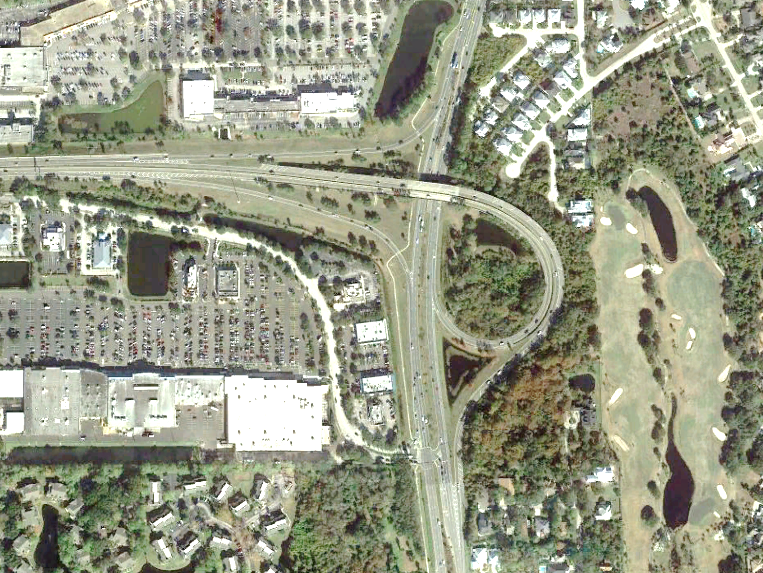
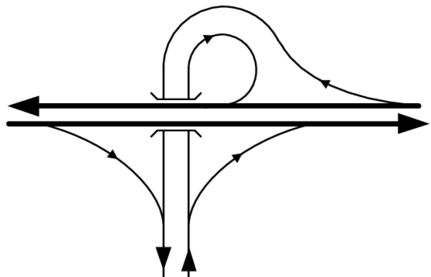
Single Point Urban Interchange (SPUI)
The SPUI, another variant of the compressed diamond interchange. SPUIs increase capacity and therefore accommodate more vehicles compared to conventional diamond interchanges. It was developed to improve traffic capacity and operations while requiring less right-of-way than the diamond interchange. The turning movements of the major road ramps and all the movements of the minor road are executed in one central area that is either on the overpass or underpass. Typically, SPUIs can operate on a three- or four-phase signal phasing. (FHWA Alternative Intersections/Interchanges: Informational Report)

